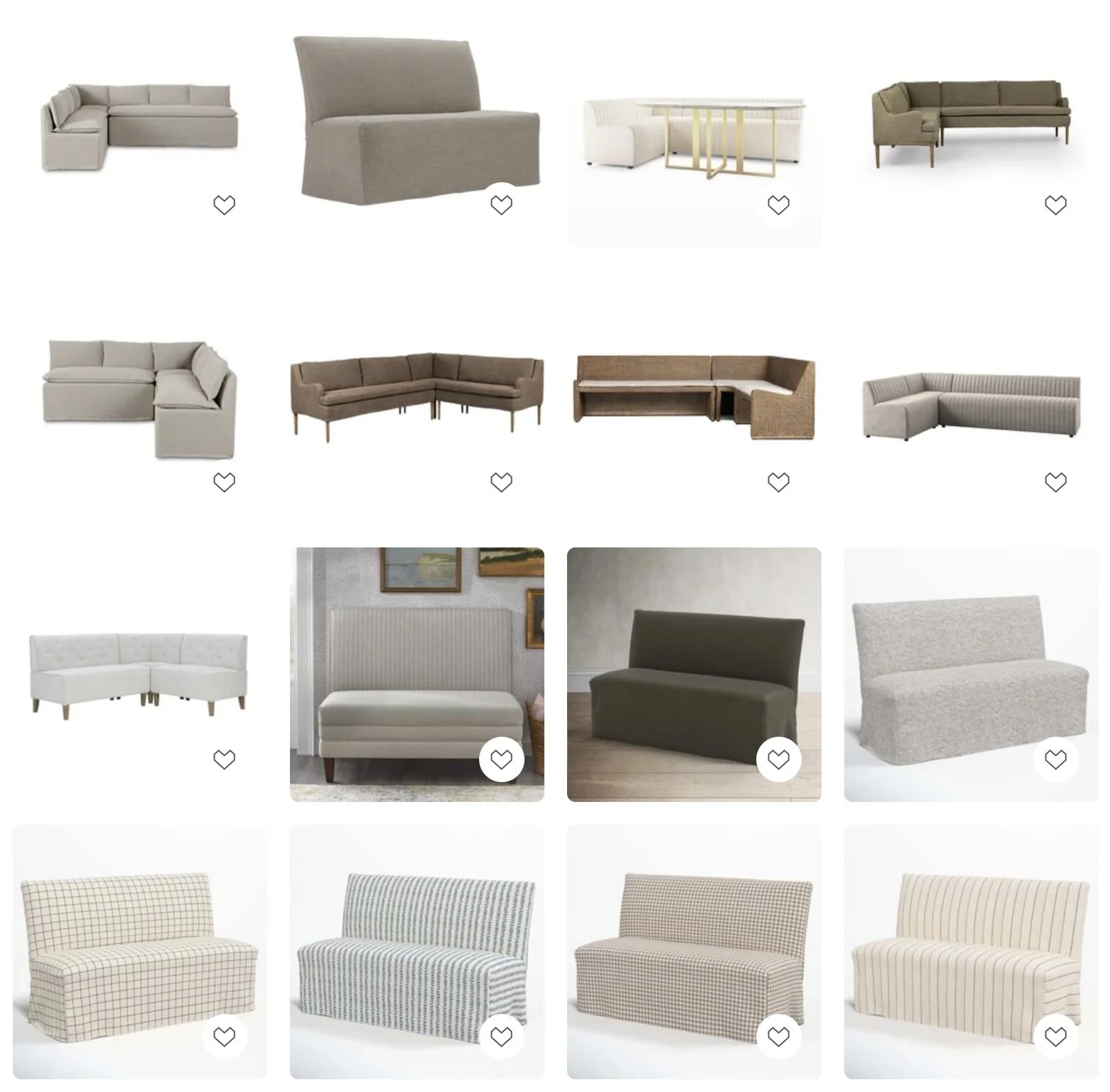EXCLUSIVE CONTENT
Complimentary Content and Design Support for Instagram Followers!
YOUR DESIGNER
Paige Gray, BA ID
Is Banquette Seating Right for Your Home? A Guide to Deciding
Banquette seating is a stylish and space-saving option for many interiors, but it’s not always the best fit for every home. Whether you're creating a cozy nook or optimizing space in a dining area, understanding the benefits and limitations of banquettes will help you make the right decision. Here's a guide to help you assess whether banquette seating is a good fit for your home.
When Banquette Seating Works
1. For Families or Small Gatherings
Why it works: Banquette seating is perfect for family-oriented spaces because it can accommodate multiple people comfortably. It encourages close interaction, making it ideal for meals, game nights, and family conversations. The built-in nature of banquettes can be more efficient in seating several people, often in a cozy, intimate setting.
Best for: Families with children, small social gatherings, or anyone who enjoys casual dining and flexible seating arrangements.
2. In Spaces That Need to Expand for Larger Groups
Why it works: If you often host extended family or have dinner parties, a banquette offers the advantage of maximizing seating without taking up more floor space. It can be designed with additional storage, like drawers or cubbies, to keep your space tidy when not in use. It’s also an efficient way to seat a larger number of people without overcrowding the room.
Best for: Entertaining spaces, dining areas, or open-plan living areas that need to expand quickly for guests.
3. For Transitional Spaces (Multipurpose Areas)
Why it works: Banquettes can work well in transitional spaces that serve multiple functions—such as a dining area that also functions as a work-from-home space or a lounge area that sometimes becomes a breakfast nook. The formality and structure of traditional seating are often not necessary in such settings, and a banquette's design can adapt to different uses.
Best for: Areas like kitchens that double as dining rooms, entryways with built-in seating, or spaces where seating is needed for both eating and relaxing.
When Banquette Seating Doesn’t Work
1. When Your Space Has Multiple Entry and Exit Points
Why it doesn’t work: If your room has multiple doorways or entry points, a banquette might obstruct the flow of movement. People may feel cramped or uncomfortable when navigating through tight spaces. When there is a need for flexibility in how people move through a room, the permanent, fixed nature of a banquette can become a hindrance.
Not ideal for: Rooms with busy or multiple traffic flow points, or areas where guests need to freely move in and out.
2. When Space Is Too Tight to Provide Comfortable Dimensions
Why it doesn’t work: Banquette seating requires enough space for both the depth of the seat (for comfort) and adequate cushion support. If the room is too small to provide sufficient seat depth or there’s not enough clearance for people to sit comfortably, a banquette can quickly become more of a hindrance than a benefit. Comfort should always be prioritized, especially for seating that will be used regularly.
Not ideal for: Small rooms where the depth of the seat and comfort of the cushions are compromised due to limited space.
3. When You Prefer Easily Adaptable Spaces
Why it doesn’t work: Banquette seating is typically a permanent fixture, which means it’s less adaptable than more traditional seating options. If you anticipate needing the flexibility to rearrange the space or if your needs change over time, a built-in banquette might not be ideal. Unlike movable chairs or stools, a banquette can’t be shifted or reconfigured as easily to accommodate different activities or layouts.
Not ideal for: Those who frequently rearrange their spaces or need multifunctional furniture that can be adapted to different setups.


